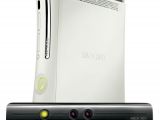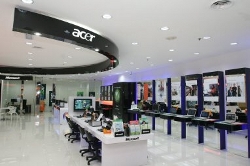Scott Fulton On Point badge (200 px)Now, they can adopt Google's quaint tiny prediction & sing praises -- perhaps to the tune of "It's a Tiny World After All" or, if you prefer to go over the top, "The Battle Hymn of the Republic" -- to the notion that "The Web is now the platform." In our hearts, they may hope for that to be true; in our minds, they all know that is rubbish, holding as much water as Intel's & Microsoft's 1980s notion that x86 architecture "is the platform." There is no single platform for online applications, & whether there ever will be is still a matter of some debate. At this rate, it is not happening.
For Google to emerge as a true contender in the field of netbook operating systems as soon as 2011 will require it to have smoothly & swiftly cleared an immense obstacle coursework first. But the fact that Google will make the attempt will underscore a hard new reality facing Microsoft, two which my mate Carmi Levy pointed out on Monday: The rules of the game for operating systems & applications are changing rapidly, & their underlying principles are being rewritten.
The killer app remains the killer
But whoever holds the key to the applications that people require to use, will hold title to "the platform" that developers will support; & if that key should alter hands, developers will follow. Right now, Google does not hold that key; & as far as applications are concerned -- functional tools that people & businesses require to use every day & trust with their livelihoods -- it actually has not been getting any closer at all to attaining that aim.
That is not because of Office's reliability or even necessarily its quality (which has sometimes been a variable), but because of the colossal third-party support method in place for training its business users & supporting business' applications designs based around Office. It is still a very strong foundation that won't be toppled easily; what had appeared to be the best organized hard work to dissolve Office's stronghold on business -- the attack on Microsoft's document standards -- has largely fallen apart after Microsoft's successful campaign to make ISO 29500 an international standard.
Microsoft's stronghold in application today rests on one pillars: the prominence of Windows & the ubiquity of Office. Windows is the strongest operating method for x86 systems today. But the principal reason for that is because businesses prefer Office applications. The secondary reason is because more businesses' custom apps are written for Windows, & thus their logic is based on Windows databases; but even now, the reason businesses still choose Windows as their custom apps platform is because they plan to also use Office. The third reason is because Windows Server is strong in providing Exchange & SharePoint services, but even those are more dependent on Outlook, Word, & Excel as time goes on -- everything that follows merely supports the principal reason: Businesses prefer Office.
Making the operating method not matter
For Chrome to become successful as an operating method, it will require strong applications -- a counterpart to the boost that Office gives Windows. & right now, Google Apps are no contender to Office, despite the innovative platform on which they are based, & an even more innovative platform being developed for them. Google will require applications that are well supported, that businesses will adopt & trust, & that will also play equally on Linux, Mac, & Windows. Until it can play that trump card, Chrome will be, from the point of view of Windows users, the #3 or #4 Web browser.
But let's be honest: Google's aim is to generate a way for developers to build "for Chrome," & have their apps run on Linux, Mac, & Windows. Whether Chrome is the OS on the client method or not, Google would provide users with as much intermediate code as is necessary -- as tiny as a runtime or a Web browser, or as large as a Linux environment -- to provide its Web apps with platform parity.
Yet Google has made some progress in attaining two principal aim: specifically separating "the platform" from the operating method. This was Sun Microsystems' original aim: to make it feasible for developers to address a broader base of users than any single operating method would claim for itself. It is still a smart idea, making it possible to not must publish "for Windows" or "for Mac." Google's revision of this idea is to set up "Web standards" as the basis for its platform, to make lovely with regulators who are easily placated by promises of "openness" & "interoperability."
Here's the real problem: The conditions which made it possible for Google to make this breakaway attempt to attack Microsoft, indicate that the operating method is less important as a foundation for "the platform." But for Google to be a contender, it's to make its operating method more important -- it's to convince users that because the OS doesn't matter much anymore, Chrome OS matters. It's to advance "the platform" to such a status that consumers & business purchasers will pay less attention to the client OS, even though that is part of the baggage that may come with Chrome.
You can see the logos now, cannot you: "Works with Chrome OS." "Chrome-Ready."
Read more...







